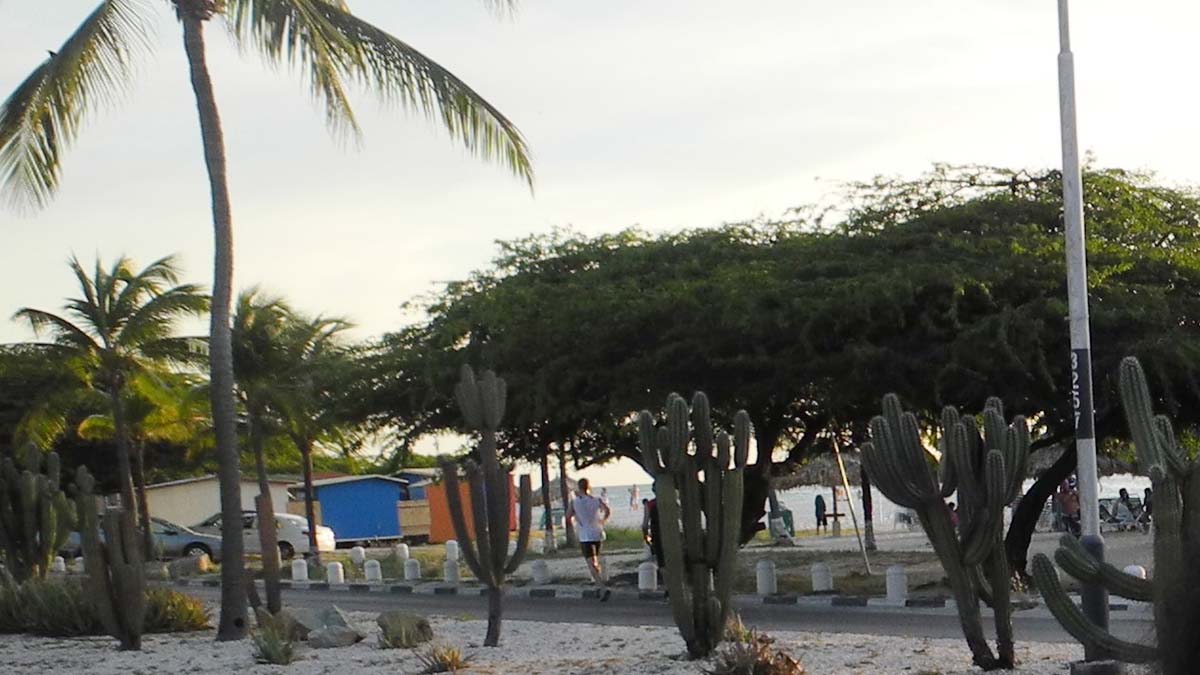
by Susmita Sengupta
“Bon bini.” This lyrical, unusual word greeted me and my family at Queen Beatrix International Airport at Oranjestad, Aruba where we had arrived for a short vacation. Bon bini means welcome in the Papiamento language, one of four languages that are commonly spoken in this Caribbean island. The official language is Dutch while English and Spanish are also widely spoken.
Aruba is a tiny island, barely 20 miles long and 6 miles wide and is part of a group known as the ABC islands, the other two islands being Bonaire and Curacao. These are all part of the Dutch Caribbean located in the Lesser Antilles archipelago in the Caribbean Sea. I discovered that the Kingdom of Netherlands is actually made up of four countries, namely, Holland, Curacao, St. Maarten, and Aruba and while these Caribbean Netherlands countries are autonomous in a variety of state matters, the Kingdom is still responsible for defense and foreign affairs.
The history of Aruba starts with the Arawak Indians who were its earliest inhabitants. The island was claimed by Spain in 1499 and was then taken over by the Dutch in 1636 which made it a part of the Dutch West India Company. The British also ruled over it briefly during the Napoleonic Wars (1805-1816) but the island reverted back to Dutch hands in 1816.
Outside the airport, the sun shone bright like it does in most Caribbean islands but as we drove towards our hotel, what caught my attention was the rugged vista. It was decidedly different from other islands of the Caribbean. Aruba lies outside the hurricane belt and garners only about 20 inches of rainfall per year. This accounts for its arid, dry climate and various kinds of cactus, thorny shrubs and the ubiquitous aloe vera plant dot the landscape.

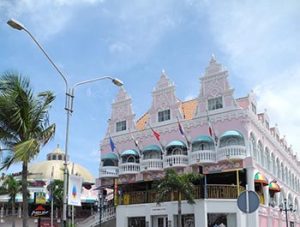 The next day we decided to explore the waterfront market, harbor and the main street shopping area of Oranjestad. The capital of Aruba is also its largest city and has a very distinctive mix of the past and the present. Downtown Oranjestad has some fantastic examples of the Dutch Colonial Revival style of architecture and I admired the ornately decorated and charmingly bright, pastel colored buildings with their classic gambrel roofs and second story balconies. We took a peek at Queen Wilhelmina Park, named after the longest reigning Dutch monarch, who ruled for 58 years, abdicating her throne in 1948.
The next day we decided to explore the waterfront market, harbor and the main street shopping area of Oranjestad. The capital of Aruba is also its largest city and has a very distinctive mix of the past and the present. Downtown Oranjestad has some fantastic examples of the Dutch Colonial Revival style of architecture and I admired the ornately decorated and charmingly bright, pastel colored buildings with their classic gambrel roofs and second story balconies. We took a peek at Queen Wilhelmina Park, named after the longest reigning Dutch monarch, who ruled for 58 years, abdicating her throne in 1948.
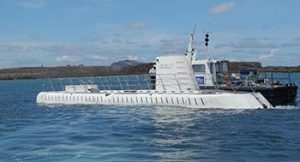 Instead of the various shopping malls lining the main street what beckoned us was the submarine tour being advertised on the waterfront. This was completely novel for all of us and we boarded the Atlantis Submarine for a dive 130 feet into the Caribbean Sea to take a closer look at shipwrecks and the marine world of the Barcadera Reef. For the next hour, we glided through the reef, mesmerized by the schools of colorful, tropical fish and coral gardens.
Instead of the various shopping malls lining the main street what beckoned us was the submarine tour being advertised on the waterfront. This was completely novel for all of us and we boarded the Atlantis Submarine for a dive 130 feet into the Caribbean Sea to take a closer look at shipwrecks and the marine world of the Barcadera Reef. For the next hour, we glided through the reef, mesmerized by the schools of colorful, tropical fish and coral gardens.
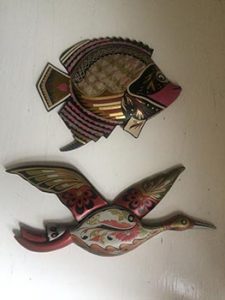 That’s not to say we were apathetical towards the idea of shopping. At the Paseo Herencia mall, we came upon a unique store selling artwork in the Mopa Mopa style. There were colorful animals, masks, boxes, pots and such figurines which I learnt were made by artisans continuing in the artist traditions of the Quillacinga tribe. The process involves boiling the buds of the Mopa Mopa tree to obtain a resin which is then stretched by the artists using their teeth. This stretched resin is colored with natural materials and adhered to wood, glass, metal or clay objects simply with pressure and heat from the artisan’s hands. The vibrantly colored figurines immediately brought to my mind the lacquer work of India to which this bore a strong resemblance.
That’s not to say we were apathetical towards the idea of shopping. At the Paseo Herencia mall, we came upon a unique store selling artwork in the Mopa Mopa style. There were colorful animals, masks, boxes, pots and such figurines which I learnt were made by artisans continuing in the artist traditions of the Quillacinga tribe. The process involves boiling the buds of the Mopa Mopa tree to obtain a resin which is then stretched by the artists using their teeth. This stretched resin is colored with natural materials and adhered to wood, glass, metal or clay objects simply with pressure and heat from the artisan’s hands. The vibrantly colored figurines immediately brought to my mind the lacquer work of India to which this bore a strong resemblance.
Having heard about Aruba’s Carnival that takes place in January and February, we were eager to experience it in some manner. This two month long celebration of parades and street parties is an extravaganza of over the top pageantry. The evening lighting parade is considered a visual treat as all costumes and floats are covered in thousands of tiny lights increasing the dramatic effect. We got a glimpse of the energy and beauty of this parade by attending an evening musical show featuring the throbbing Carnival music with dancers decked in elaborate and luxuriously sequined and feathered outfits.
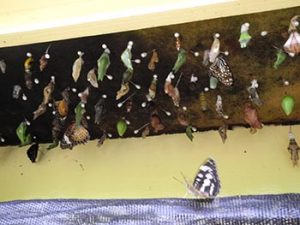 On our last day in Aruba, my daughter was eager to visit the Butterfly Farm which turned out to be a magical way to spend a couple of hours. “I don’t think I’ve seen so many butterflies together ever before,” she said. Neither had I. The Butterfly Farm is basically a tropical garden brimming with butterflies from every corner of the earth and visitors can have a marvelous time being one with nature. It was exciting to see the iridescent Blue Morpho butterflies from the South American rainforests, the giant Atlas Moth which is technically not a butterfly, the Swallowtail butterfly, and many others, and of course my personal favorite, the Monarch butterfly which I saw again for the first time since I left India many years ago. My daughter and I could not contain our excitement when butterflies just landed on us and stayed put while we walked around the garden.
On our last day in Aruba, my daughter was eager to visit the Butterfly Farm which turned out to be a magical way to spend a couple of hours. “I don’t think I’ve seen so many butterflies together ever before,” she said. Neither had I. The Butterfly Farm is basically a tropical garden brimming with butterflies from every corner of the earth and visitors can have a marvelous time being one with nature. It was exciting to see the iridescent Blue Morpho butterflies from the South American rainforests, the giant Atlas Moth which is technically not a butterfly, the Swallowtail butterfly, and many others, and of course my personal favorite, the Monarch butterfly which I saw again for the first time since I left India many years ago. My daughter and I could not contain our excitement when butterflies just landed on us and stayed put while we walked around the garden.
“One Happy Island,”read the car plate, something I had not noticed earlier. I could not have agreed more. The windswept vistas, the dazzling, white sand, uncrowded beaches, the charming, unpretentious capital of Oranjestad with all its attractions, all make Aruba a perfect vacation destination.
If You Go:
Aruba Tourism
Abuba – Open for Happiness
Visit Aruba
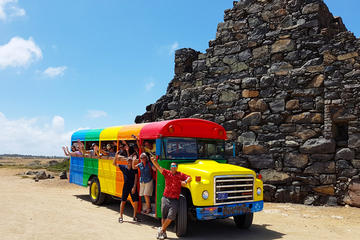
Colorful Beach Bus Sightseeing Tour of Aruba
About the author:
Susmita Sengupta is a freelance writer who loves to travel. She and her family have visited various parts of the USA, Canada, Europe, the Caribbean, Middle East, Southeast Asia and India. She resides in New York City with her family.
All Photos by Susmita Sengupta
A landscape of cactus plants
Dutch Colonial Revival building in downtown Oranjestad
The Atlantis Submarine
Examples of Mopa Mopa art
Musical show featuring Carnival dancers
Hanging chrysalises at the Butterfly Farm



Leave a Reply
You must be logged in to post a comment.